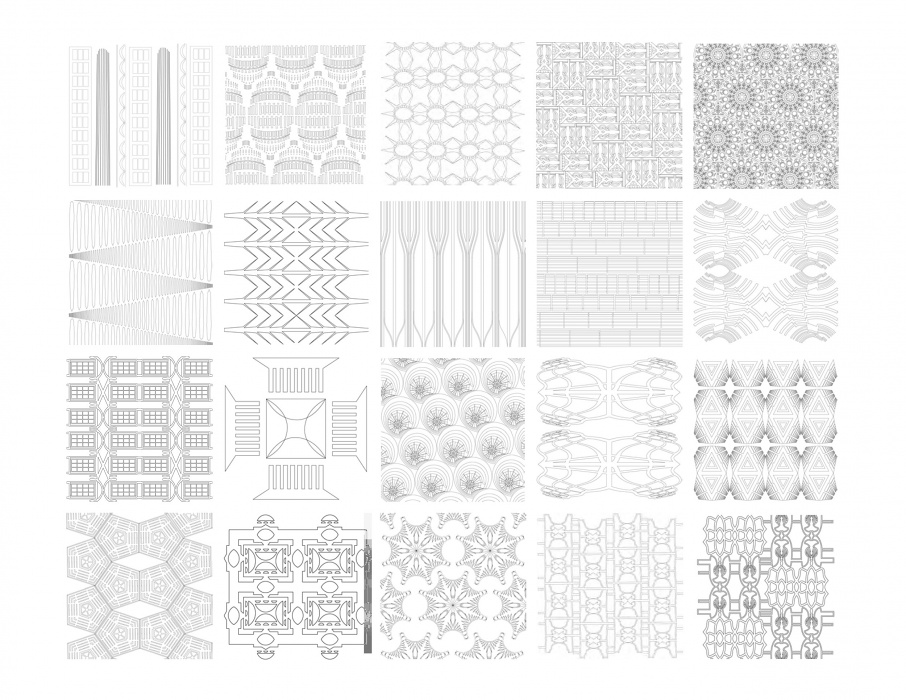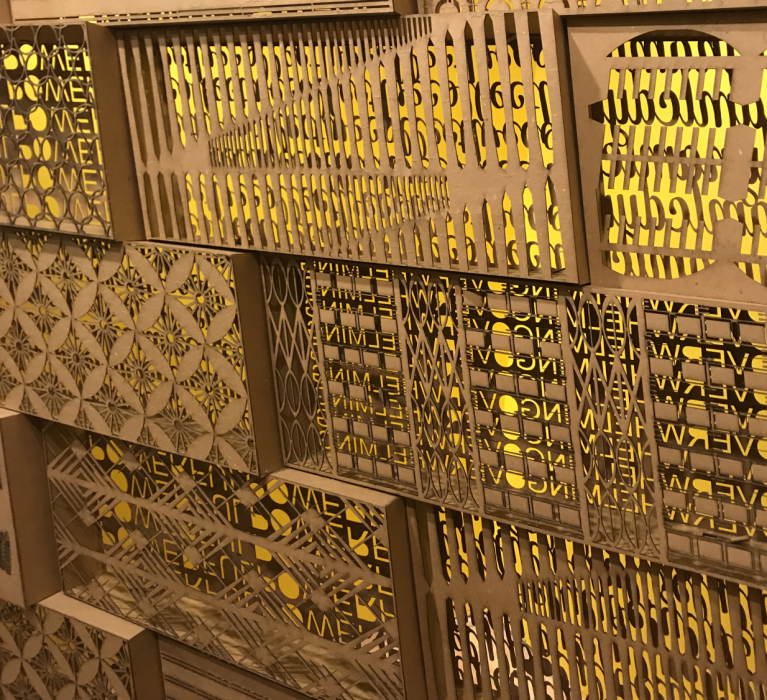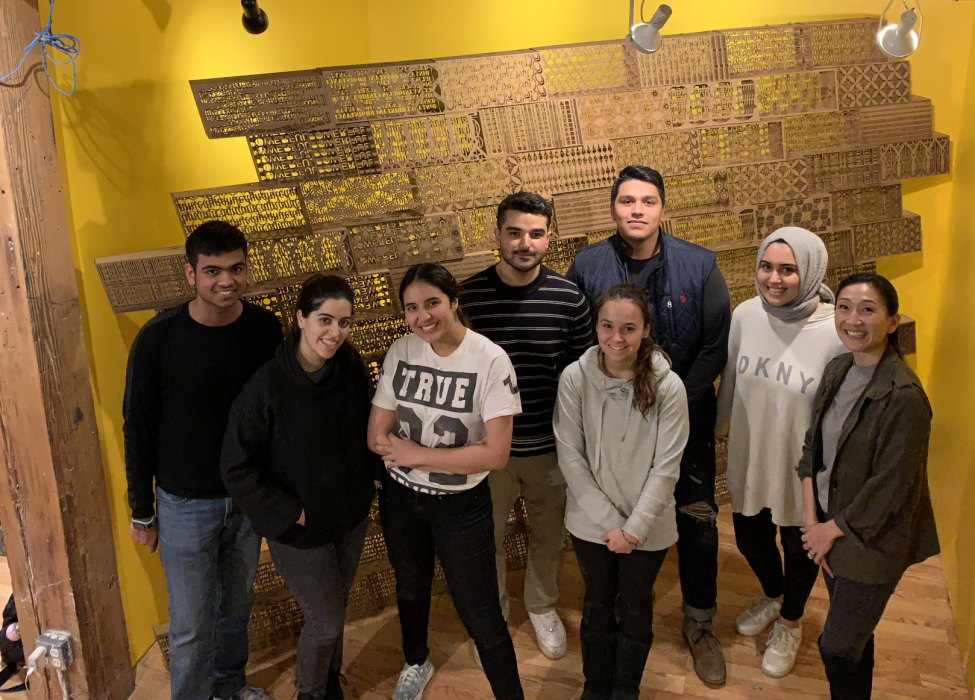Our Great, Great Wall
UPDATE: As of Monday, November 11 2019, Our Great, Great Wall will be installed at the Chicago Cultural Center Learning Lab as part of the 2019 Chicago Architecture Biennial. The installation will remain on view until November 17, 2019 and is free to all visitors. The story below was originally published April 2, 2019.
Walls are architectural facets loaded with symbolism, both optimistic and sinister. On one hand, they form the essential foundations of buildings, and without them we wouldn’t have shelter, that most basic human need. On the other, walls can be seen as symbols of division and discord, especially given our current political reality. An art installation spearheaded by Illinois Institute of Technology Visiting Assistant Professor Jennifer Park, and completed with the help of 13 second-year Illinois Tech architecture students and a handful of students from the School of the Art Institute of Chicago, aims to explore this duality, as well as the political implications of the built world around us.
Called Our Great, Great Wall, the project finds its roots in a survey of Chicagoans who provided one-word descriptions to well-known buildings in the United States. “We created a catalog of words that people could select from, then gave them a survey where they circled a picture then circled a word,” explains Park. “We wanted it to be a kind of quick reaction.”

Words ranged from positive, like “collective” and “dynamic,” to negative, like “overwhelming” and “disempowering.” Examples of buildings chosen for the survey included the overtly political, such as the White House and the Vietnam Veterans Memorial, as well as other notable buildings such as the Daley Center in Chicago or the Guggenheim Museum in New York.
“These are buildings that have been hailed as great figures of our society and figures of our democracy,” says Park. “We thought about how we as a society were questioning our perspectives of society or how we view our political system, and it was hard not to question if that perspective is changing how we see certain symbolism in our built environment.”
Crafting a physical manifestation of the responses was a matter of designing intricate graphic patterns that draw upon iconic motifs from each building. For example, the Chicago Cultural Center was represented through a cohesive weaving of the building’s stunning Tiffany glass dome; similarly, the Pentagon was displayed as a formation of repeating pentagons. These graphics were then laser cut onto gypsum board, then paired with another gypsum board piece etched with the corresponding descriptor. These pieces formed the basis for the building blocks comprising the finished wall.

The project first found its footing in 2017, when Park worked with Norman Teague of BlkHaUS Studio and a group of students at SAIC, and was displayed there at SAIC in the spring of that year, followed by a showing at the former Anthony Overton School, part of an installation with Creative Grounds, that summer. It wasn’t until Park was approached by Ciera McKissick, a curator from AMFM Chicago, that the project come back in a third iteration for the V Word Experience, a cause-driven art exhibit centered on several topics, among them immigration, diversity, equality, and women empowerment in April of 2019.
With little time to prepare, and with the first iteration in less-than-ideal shape after sitting in storage for several months, Park called upon many of her second-year Illinois Tech students to help bring the project back to life in time for the exhibition. “The students self-organized so much. We set out goals and timeframes, and we certainly had last-minute hiccups to work around, but these students were awesome,” says Park. “We were impressed with how thorough and self-organizing they were, and how quick they were to adapt.”
“The most appealing part was to see the whole project on the wall as its final look and to take a step back and see what we have done within a short period of time,” says Semra Defterali (ARCH 2nd year). “When you are working in a group project like this, it runs so fast that you can’t even follow the design process anymore until it is actually done.”

Beyond having the opportunity to work on a project outside of the university and to collaborate with students from SAIC, Illinois Tech students who worked in the project had an opportunity to glean new insights about the political fallout of architecture.
“In my opinion, the message behind this is that everything has meaning to it, just like how each part of the facade was matched up with a word,” says contributor Arshia Dizna (ARCH 2nd year). “Politically speaking, it shows us how we need so many different opinions in order for good politics to exist.”